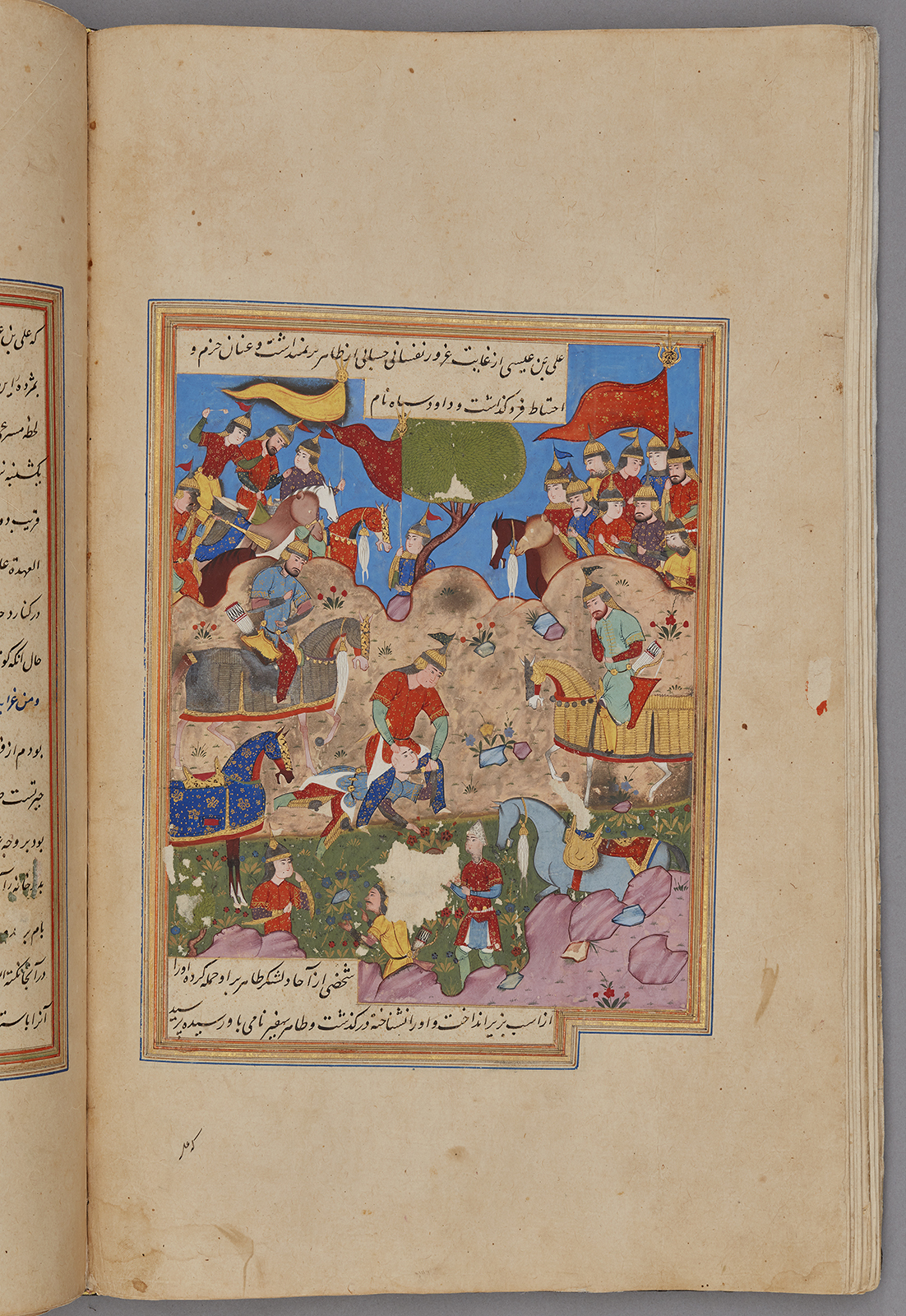Click on the image to zoom
The victory of Maʿmun over Amin, Folio from a manuscript of Nigaristan
- Accession Number:AKM272.f52v
- Creator:Author: Ahmad b. Muhammad Ghaffari, Persian, died 1567 Scribe: Ahmad al-Shirazi
- Place:Iran, Shiraz (probably)
- Dimensions:38.7 cm × 25 cm × 6.4 cm
- Date:1573-74 CE/980 AH/AH 980
- Materials and Technique:Ink, opaque watercolour, and gold on paper
The miniature painting "The victory of Maʿmun over Amin" is from an intact manuscript of Kitab-i Nigaristan, a collection of anecdotes and historical incidents written in prose by the historian and scholar Ahmad Muhammad Ghaffari (1504–1567/68) of Kashan in 1551–2. This illustrated manuscript, dated 1573, was probably produced in a Shiraz workshop.
See AKM272 for more information about the manuscript and links to the other illustrations.
Further Reading
This illustration depicts two sons of the Abbasid Caliph, Ma’mun and Amin, engaged in deadly combat. It features a setting typical of Persian miniature painting, particularly during the Timurid period (1370–1507). Here, troops face each other and are set on the left and right hand side of the image, identified by their battle standards. The main battle—in which Ma’mun decapitates Amin—takes place at the middle of the image. A historical figure, Ma’mun would later rule as the Abbasid caliph in Baghdad from 847 to 861.
A blue sky can be seen above the battlefield. Landscapes throughout the Nigaristan are either blue or gold; the latter is generally reserved for paintings depicting royalty. Like other manuscripts of the period (1565–80), the Nigaristan uses precious materials such as lapis lazuli and gold to produce a luxurious manuscript.
This illustration is damaged in several places. The greatest damage has occurred in the landscape below the combat scene.
- Elika Palenzona-Djalili
References
Sims, Eleanor. Peerless Images: Persian Painting and Its Sources. New Haven and London: Yale University Press, 2002. ISBN: 9780300090383
Uluç, Lale. Turkman governors, Shiraz artisans and Ottoman collectors. Sixteenth century Shiraz manuscripts, Istanbul: Türkiye İş Bankası Kültür Yayınları, 2006. ISBN: 9789754589634
Note: This online resource is reviewed and updated on an ongoing basis. We are committed to improving this information and will revise and update knowledge about this object as it becomes available.


